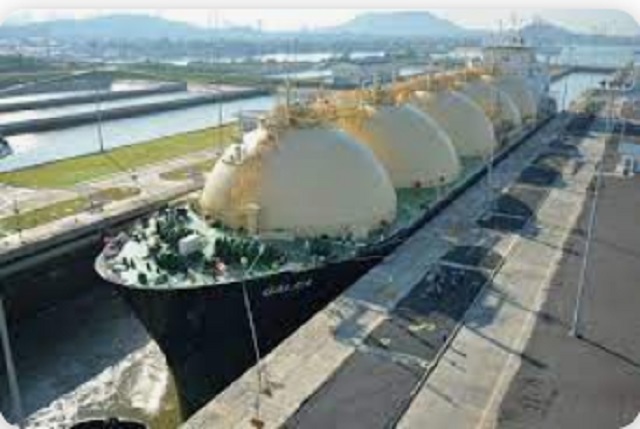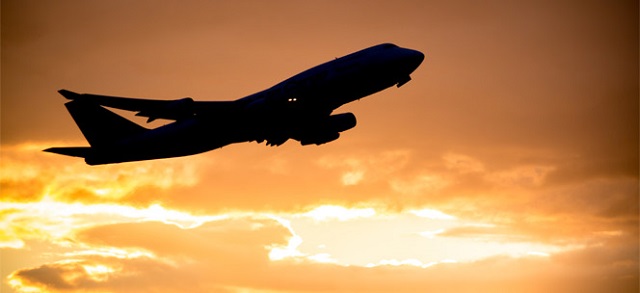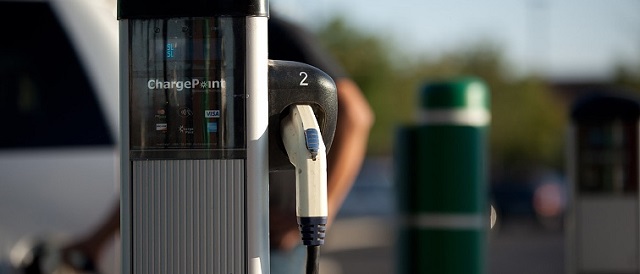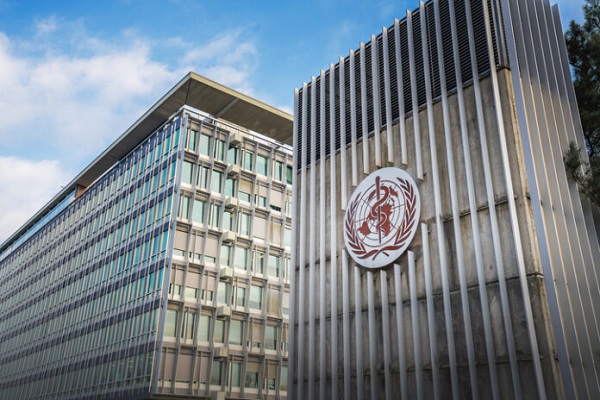Economy
Panama Canal drying up woes could have benefited Canadian LNG – If only we had any

From the Frontier Centre for Public Policy
There’s a disturbance in the force of global shipping, as if a major transit point started slipping away.
There’s a very serious problem occurring a few thousand miles to the south of us, one that Canada could have taken tremendous advantage of, if only we had built and completed some liquified natural gas (LNG) terminals by now.
The Panama Canal, one of the wonders of the modern world that utterly changed trade and geopolitics, is drying up.
The canal, which usually handles about 36 ships a day, has in recent days reduced that to 24. By Feb. 1, it is expected to fall to 18. And the largest ships who do transit the canal have to reduce their cargoes, lest they scrape bottom.
That’s because the canal uses fresh water, captured by dams and forming the massive Gatun Lake. That fresh water is collected from ample rains. Every single time a ship passes through the canal, water used to operate the locks is flushed into the ocean. While the greatly expanded third set of locks allows much, much larger ships to use the more than 100 year-old canal, they also use a lot of water despite an innovative water recovery system. And the Canal Authority says they’ve had the lowest rains in 73 years, since 1950.
So when you add up the additional, much larger locks, with a local drought, the canal is rapidly falling into crisis. And the world is starting to take notice.
As they should, since soon half of all ships that usually use the canal will be turned away.
No one depends on the canal more than the Americans. They built it, after all, for a reason. And one of the biggest is it allows for quick access for Gulf Coast ports to Pacific markets. This was a very real reason why building a half dozen large LNG terminals made so much sense (in addition to their proximity to gas production.)
Well, a lot of that just got thrown out the window. Cutting ship transit numbers by half means a dramatic curtailment of the ability of US LNG cargoes to access the Pacific markets. Their alternative is to add something like 8,000 miles going around South America’s Cape Horn, which absolutely no one wants to do due to the treacherous weather and seas.. Otherwise, they have to cross the Atlantic, Mediterranean, Red Sea, Indian Ocean and Straits of Malacca to get to east Asia markets.
The net effect will be some cargoes from the Gulf Coast destined for Asia will have to go much, much further to deliver their product. That means fewer cargoes per ship per year. It’ll tighten up ship availability, and likely put pressure on LNG prices.
And if Canada had moved quicker on building out LNG terminals, particularly on the West Coast, we would be perfectly positioned to cash in on this situation. Not only is Kitimat, Prince Rupert and the like much, much closer to China and Japan, there’s no drying up Panama Canal to contend with, either.
Small wonder, then, Conservative Leader Pierre Poilievre chose on November 10 to post on his various social media channels, “Since Trudeau took office: 18 LNG terminals have been proposed. 0 have been completed.”
To be fair, LNG Canada, the largest proposal, is in the finishing stretch. In July they reported 85 per cent completion. In recent weeks, TC Energy reported the completion of the “golden weld” on the Coastal GasLink pipeline that will supply LNG Canada and presumably other facilities on the West Coast. Without pipeline, which was both massively delayed and overbudget, no small thanks to pipeline protesters, LNG Canada would be useless.
Other projects are finally gaining traction – Woodfibre LNG at Squamish on the south coast, and Ksi Lisims LNG right on the Alaska/BC border, and Cedar LNG, a floating LNG terminal adjacent to LNG Canada and served by Coastal GasLink.
Remember when the German chancellor came to Canada, seeking LNG, and was told by Prime Minister Justin Trudeau there was “no business case?” And then the Japanese prime minister was told something similar a few weeks later?
The Ukraine War has proven a business case for almost two years in the Atlantic basin. The Panama Canal reduction in service will soon prove it in the Pacific. What more do we need?
Canada should have built these projects years ago. We’d be securing markets and cashing in today.
No business case, indeed.
Brian Zinchuk is editor and owner of PipelineOnline.ca, and occasional contributor to the Frontier Centre for Public Policy. He can be reached at [email protected].
Economy
Canadians experiencing second-longest and third steepest decline in living standards in last 40 years

From the Fraser Institute
From 2019 to 2023, Canadian living standards declined—and as of the end of 2023, the decline had not yet ended, finds a new study published today by the Fraser Institute, an independent, non-partisan Canadian public policy think-tank.
“Despite claims to the contrary, living standards are declining in Canada,” said Grady Munro, policy analyst at the Fraser Institute and co-author of Changes in Per-Person GDP (Income): 1985 to 2023.
Specifically, from April 2019 to the end of 2023, inflation-adjusted per-person GDP, a broad measure of living standards, declined from $59,905 to $58,111 or by 3.0 per cent. This decline is exceeded only by the decline in 1989 to 1992 (-5.3 per cent) and 2008 to 2009 (-5.2 per cent). In other words, it’s the third-steepest decline in 40 years.
Moreover, the latest decline (which comprises 18 fiscal quarters) is already the second-longest in the last 40 years, surpassed only by the decline from 1989 to 1994 (which lasted 21 quarters). And if not stabilized in 2024, this decline could be the steepest and longest in four decades.
“The severity of the decline in living standards should be a wake-up call for policymakers across Canada to immediately enact fundamental policy reforms to help spur economic growth and productivity,” said Jason Clemens, study co-author and executive vice-president at the Fraser Institute.
- Real GDP per person is a broad measure of incomes (and consequently living standards). This paper analyzes changes in quarterly per-person GDP, adjusted for inflation from 1985 through to the end of 2023, the most recent data available at the time of writing.
- The study assesses the length (number of quarters) as well the percentage decline and the length of time required to recover the income lost during the decline.
- Over the period covered (1985 to 2023), Canada experienced nine periods of decline and recovery in real GDP per person.
- Of those nine periods, three (Q2 1989 to Q3 1994, Q3 2008 to Q4 2011, and Q2 2019 to Q2 2022) were most severe when comparing the length and depth of the declines along with number of quarters required for real GDP per person to recover.
- The experience following Q2 2019 is unlike any decline and recovery since 1985 because, though per person GDP recovered for one quarter in Q2 2022, it immediately began declining again and by Q4 2023 remains below the level in Q2 2019.
- This lack of meaningful recovery suggests that since mid-2019, Canada has experienced one of the longest and deepest declines in real GDP per person since 1985, exceeded only by the decline and recovery from Q2 1989 to Q3 1994.
- If per-capita GDP does not recover in 2024, this period may be the longest and largest decline in per-person GDP over the last four decades.
 Read the Full Report
Read the Full Report
Authors:
Economy
Feds spend $3 million to fly 182 politicians and bureaucrats to climate conference

From the Canadian Taxpayers Federation
Author: Ryan Thorpe
Feds trip to COP28 in Dubai cost $3 million
The cost for Canada to send hundreds of people to COP28 in Dubai has doubled, rising to nearly $3 million, according to government records obtained by the Canadian Taxpayers Federation.
Included in those costs is $1.3 million the federal government dished out to host a “Canada Pavilion” at the summit, which featured a rapper performing a song on “climate disinformation,” while giving a shoutout to Environment Minister Steven Guilbeault.
“Nothing screams fighting climate change like flying around the world burning through jet fuel and millions of tax dollars,” said Franco Terrazzano, CTF Federal Director. “Here’s a crazy idea: maybe the feds don’t need to spend $3 million flying 182 politicians and bureaucrats to Dubai.”
The federal government paid for at least 182 people to go to COP28, held from Nov. 30 to Dec. 12, 2023, in Dubai, United Arab Emirates.
A previous report from the National Post pegged the cost for Canada’s delegation at $1.4 million.
But the bill now sits at $2,954,188, including $825,466 for transportation, $472,570 for accommodations and $295,455 for meals and incidentals, according to the records.
The records indicate the cost could rise even higher, as certain invoices and travel claims “have yet to be processed.”
Costs included $1.3 million for a “Canada Pavilion” to “showcase the breadth of Canadian climate leadership.”
At the Canada Pavilion, a Canadian rapper known as Baba Brinkman – the son of Liberal MP Joyce Murray – performed a rap on “climate disinformation.”
“Climate disinformation, get that immunization, the vaccine for bad meme infiltration,” Brinkman rapped. “Climate misinformation, it leads to polarization, which leads to radical conspiracy ideation.”
Environment Minister Steven Guilbeault also received a shoutout during Brinkman’s rap.
“Really? Hosting a rapper half-way around the world to drop rhymes at a government podium will help the environment?” Terrazzano said.
The records were released in response to an order paper question from Conservative MP Dan Mazier (Dauphin-Swan River-Neepawa).
Most of the hotel expenses came from the Dubai Marriott and the Premier Inn at the Dubai Investment Park, with rooms coming in between $150 and $400 per night.
The most expensive digs was a $816-per-night suite at the Pullman Dubai Jumeriah Lakes Towers, a “five-star hotel offering upscale accommodations.”
The Canadian delegation also handed out $650 worth of gifts during the trip.
-

 COVID-192 days ago
COVID-192 days agoCOVID Lab Leak: Over four later, EcoHealth Alliance funding is finally suspended
-

 Automotive24 hours ago
Automotive24 hours agoBiden’s Climate Agenda Is Running Headfirst Into A Wall Of His Own Making
-

 COVID-192 days ago
COVID-192 days agoNIH Quietly Altered Definition For Gain-Of-Function Research On Its Website, Former Fauci Aide Confirms
-

 Opinion1 day ago
Opinion1 day agoOrdinary working Canadians are not buying into transgender identity politics
-

 Energy1 day ago
Energy1 day agoNew Report Reveals Just How Energy Rich America Really Is
-

 Great Reset22 hours ago
Great Reset22 hours agoBiden Administration Eager to Sign WHO Pandemic Treaty
-

 Economy22 hours ago
Economy22 hours agoFeds spend $3 million to fly 182 politicians and bureaucrats to climate conference
-

 Economy21 hours ago
Economy21 hours agoCanadians experiencing second-longest and third steepest decline in living standards in last 40 years










